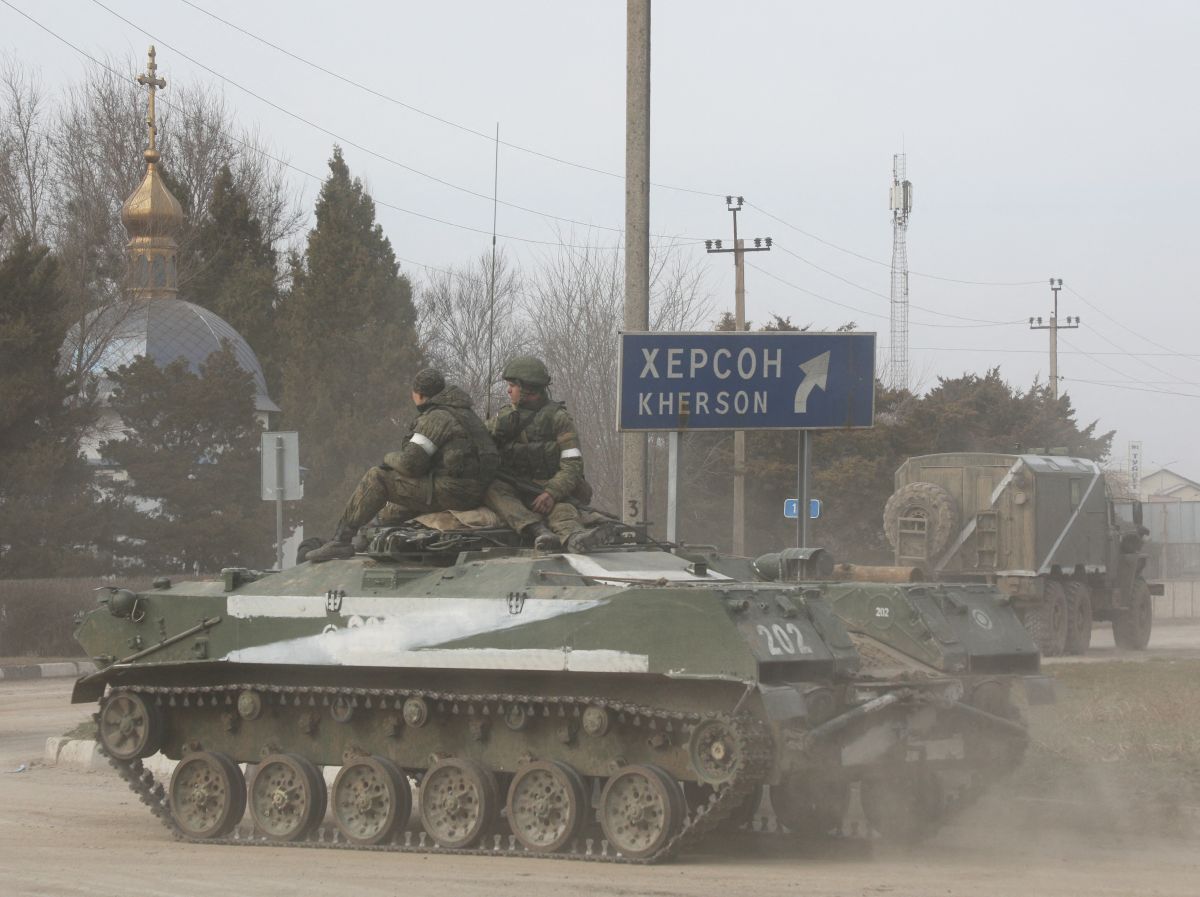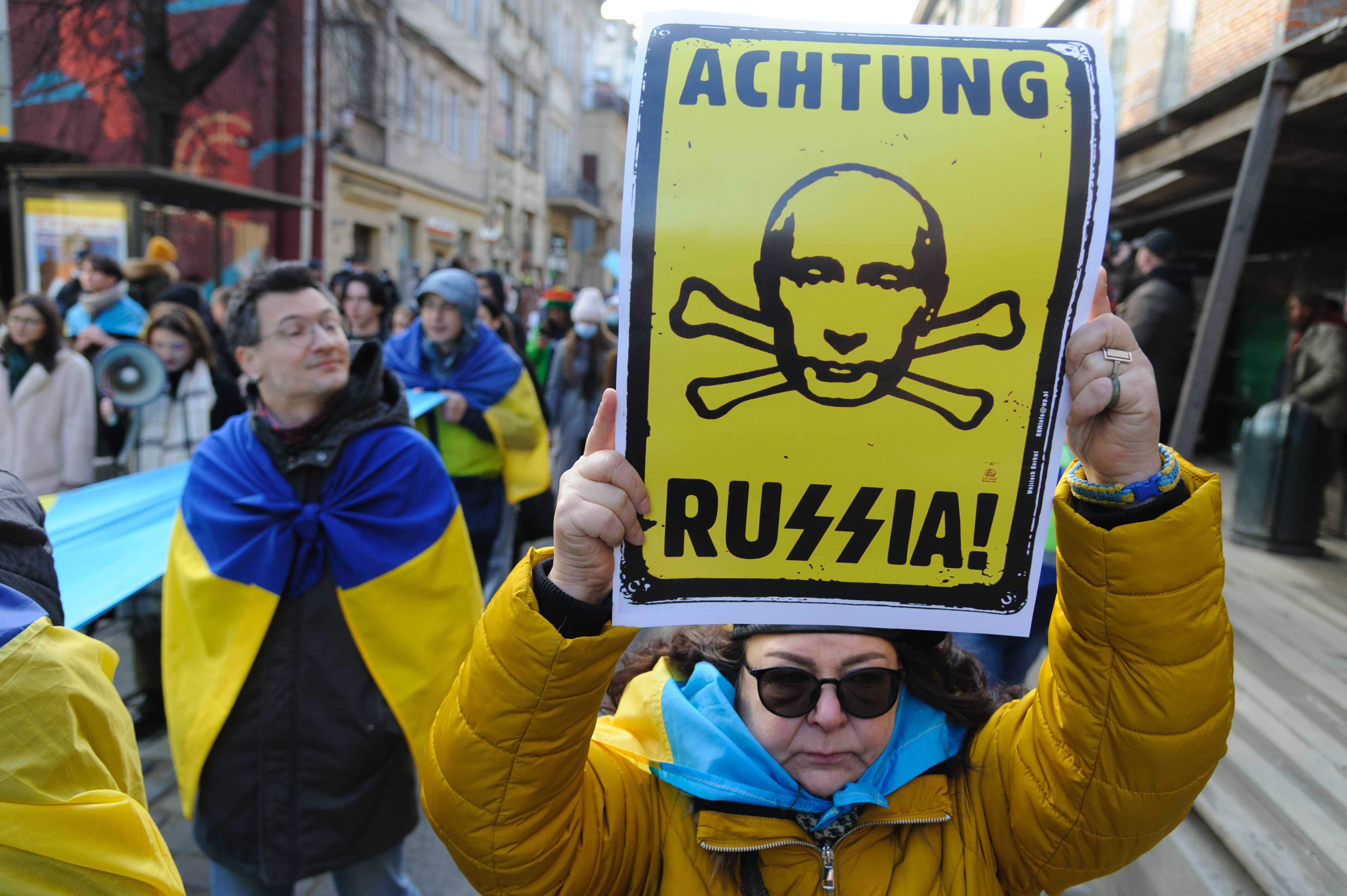Update on Military Activity in Ukraine
On 28 February, the fifth day of Russian military operations in Ukraine began. From the beginning of Russia’s attack on Ukraine, the fiercest battles have been in the north and southeast of the country. The clear goal of the Russian troops is to capture Kyiv and cut off Ukraine from the Azov and Black seas. So far, the armed forces of Ukraine have managed to keep the largest cities under their control.
 Fot. MAKSIM LEVIN/Reuters/Forum
Fot. MAKSIM LEVIN/Reuters/Forum
What operational assumptions does Russia seem to be implementing?
Since 24 February, the day of the invasion, Russia has been conducting military operations in three main directions. One is to reach and attack the capital, Kyiv, and it has been carried out both from Russia and Belarus. Also, subversive activities in the city seem to be important to the Russian military. Another key element of the attack has been the operation carried out from the Crimean Peninsula towards Mariupol, Ukraine’s key port on the Sea of Azov, in a move intended to cut off Ukraine from the sea basin and ensure a land connection between Russia proper and occupied Crimea. The third important goal has been the attempt to conquer Kharkiv. In addition, Russian troops have carried out missile attacks—according to the Pentagon there have been more than 300—across Ukraine officially aimed at military facilities but which have resulted in losses among civilians as well. In its operations, Russia primarily is using mechanised units, artillery, the Russian National Guard, reconnaissance and special forces units, and to a lesser extent aviation, including drones and airborne units.
What has Russia managed to achieve from its apparent goals?
Russia’s declared goal is to destroy the potential of the Ukrainian armed forces. So far, however, Russian forces have failed to break up Ukraine’s land forces or to force any significant units to surrender. Despite making several attempts, the Russian troops have not managed to capture Kyiv or fully encircle the city, there has been no sea landing at Odesa, and the front line in Donbas was not breached. Moreover, the morale of the Ukrainian society, which continues to support the decision to defend the state, has not broken.
However, the attack from occupied Crimea towards Mariupol has been the fastest, and the military units operating from Belarus managed to reach the vicinity of Kyiv. The most important cities that the Russians have taken over so far include Melitopol, Berdiansk, and Stanytsia Luhanska. Artillery and rocket attacks have significantly damaged some Ukrainian military facilities and critical infrastructure, mainly airports and ports, but also fuel depots and gas pipelines.
What does the Ukrainian defence look like?
Ukrainian forces are focused on delaying the aggressor and defending large cities, especially Kyiv. All major units are still operational and able to withdraw towards the capital to defend it. Anti-tank and anti-aircraft weapons, artillery, drones, and loitering munitions are being used in attacks on the Russian troops. The Ukrainian actions are favoured by the high mobilisation, the fulfilment of the orders of civilian and military authorities, and the provision of information on enemy movements by civilians. The activities of the regular forces are supported by civil defence and territorial defence units, thanks to which it is possible to weaken the Russian attempts to carry out subversive activities in large cities.
In the morning of 28 February, Ukraine reported that Russia had lost 5,300 troops, 28 fixed-wing aircraft, 29 helicopters, 191 tanks, and 816 infantry fighting vehicles. Even considering that the Russian losses may be greatly overestimated, this shows Ukraine’s ability so far to defend itself.
What hybrid actions have accompanied the Russian invasion?
The Russian aggression includes hybrid actions. It is waging an information war aimed at Ukrainian society to weaken its morale. Russian official media describes Ukrainians as “Nazis” and suggests that prisoners of war are being tortured. Russia’s disinformation activities also target the societies of Western countries. Their goal is, among others, to raise fears about international security. On 27 February, Russia raised the readiness level of its strategic nuclear forces, apparently in an attempt to influence Western countries’ calculations of aid for Ukraine and to intimidate the Ukrainians.
The military operations in Ukraine were preceded by cyberattacks on Ukrainian government ICT infrastructure, but they have not intensified since the beginning of the Russian invasion.
At the same time, the international hacker group Anonymous declared a cyber war on Russia. It has targeted the websites of the most important Russian government institutions, blocking them and altering the broadcasts of Russian television via some internet platforms.
What will the fighting look like in the coming days and weeks?
According to official data, Russia has so far dedicated about half of its military potential accumulated around Ukraine. The involvement of new forces, such troops from the Eastern Military District stationed in Belarus, as well as additional airborne forces, aviation, naval, and marine units stationed both at the border with Ukraine and inland, could significantly change the course of Russia’s operations. It cannot be ruled out that, in an extreme case, Russia will resort to systematic, massive, and long-lasting attacks on civilian targets, such as shelling large cities, mainly Kyiv, in order to break the morale of the Ukrainians and put pressure on the country’s authorities to accept a political solution imposed by Russia. Russia may also carry out additional nuclear threats.
Ukraine, in turn, will try to maintain its current tactic of stopping the enemy forces and saboteurs.
An important task will be to maintain the continuity of the functioning of state institutions and providing food and medical care to civilians. To maintain the defence capabilities of the Ukrainian military, it is very important that Western countries deliver the weapons they have declared they will send as soon as possible.




